8 easy ways to eat more greens
Tired of tossed salad? There are other ways to get the leafy vegetables your body needs.
Updated on March 20, 2023
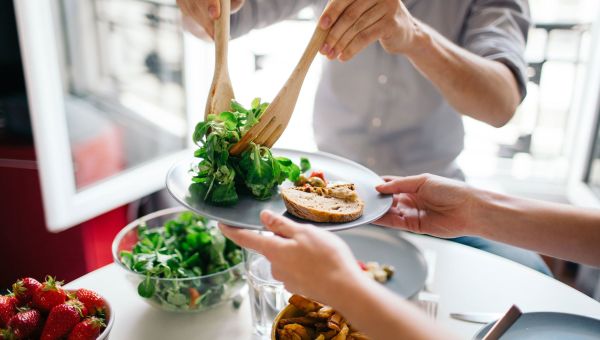
A healthy diet should include a variety of vegetables in an array of colors—dark green, for sure, but also red, orange, yellow, and purple. In fact, the United States Department of Agriculture guidelines recommend that adults get two to three cups on a daily basis. That may seem daunting, but eating more greens and other veggies doesn’t have to be a complicated culinary task. You also don’t have to eat an entire crown of broccoli or crunch your way through a huge salad at every meal.
Adding spinach, kale, and romaine into the dishes you already enjoy can give them a healthy boost—and you may not even be able to taste the difference.
Greens are low in calories and help keep your body hydrated. They're also loaded with vitamins and minerals, including vitamins A and K as well as manganese. Check out these easy (and delicious) ways to sneak more greens into your meals.
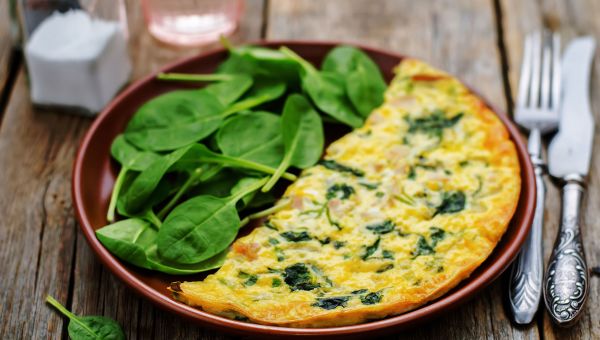
Breakfast: omelets
Vegetables might not be high on your list of “breakfast foods,” but greens can give your morning meal a boost without the refined carb overload that can often come from doughnuts and bagels. Add some spinach, kale, parsley, chopped broccoli, or arugula to scrambled eggs. This protein-packed meal is also rich in iron and fiber, which will help you feel full longer.
Veggies are low in calories—just 7 per cup of raw spinach and 31 in a cup of chopped broccoli. Swapping whole eggs for egg whites and skipping the cheese are other options for a low-cal breakfast omelet.
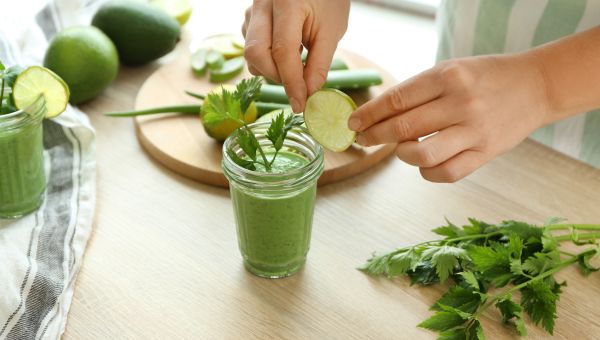
Breakfast: smoothies
A fiber-rich fruit smoothie (without added sugars) can be a healthy way to kick off your day. You can make it even better by tossing in some greens.
Boost the nutritional value of your shake by adding kale, spinach, or dandelion greens. Aside from providing your beverage with a vibrant green color, leafy vegetables offer a slew of essential nutrients, such as vitamins A, C, and K as well as fiber, folate, magnesium, calcium, iron, and potassium. Vitamins A and C help your body produce and repair cells, while calcium assists in keeping bones and teeth strong.
It can be easy to overload your blender, adding too many calories and more fat and sugar than you need. Keep it simple with a shorter list of healthy ingredients, such as spinach or kale and low-sugar fruits, like raspberries and blackberries. Incorporating a healthy fat or protein into your smoothie can also help you feel satisfied longer. Try adding a tablespoon of chia seeds, a quarter of an avocado, or a scoop of your favorite protein powder.
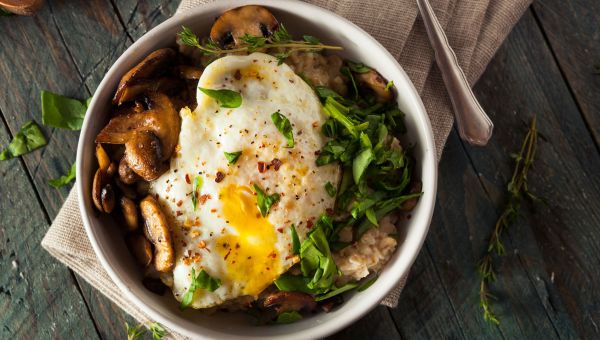
Breakfast: oatmeal
Swap sweet oatmeal for a bowl of the savory stuff. A serving of steel-cut oats is high in fiber, which promotes healthy digestion and can help you stay full longer. Top your oats with steamed greens, like low-calorie leafy greens and a poached egg. This breakfast is a good mix of fiber, protein, and other essential vitamins and minerals, including vitamins A, K, and C as well as magnesium, potassium, and iron.
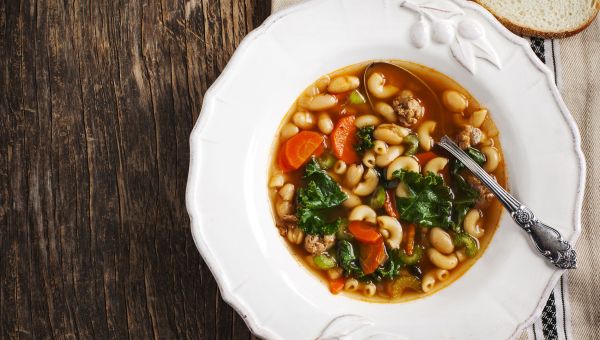
Lunch: vegetable soup
Vegetable soups and stews provide a way to get a variety of leafy greens and other veggies in one dish. Soups are versatile, too. You can wash and chop any vegetables that are hiding in your fridge. Vitamin- and fiber-rich asparagus makes a great addition. In a pot or slow cooker, combine your veggies with low-sodium vegetable broth, a blend of herbs and spices, and a few handfuls of greens like Swiss chard, kale, or bok choy.
Making your own vegetable soup can help you control what you’re consuming since store-bought versions are often high in fat, sodium, and calories.
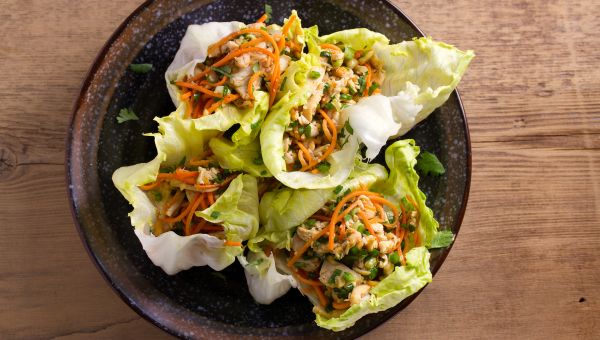
Lunch: lettuce wraps
Sandwich bread and wraps can add a few hundred extra calories to your afternoon meal. Swap out those extra refined carbs for a few pieces of crisp lettuce, instead. Bibb, romaine, and iceberg lettuce are low in calories, and deliver a punch of fiber and vitamin A, which can support eye health and help promote healthy teeth and vital skin.
Another tip for cutting calories: Swap out mayonnaise for some homemade hummus. With hummus, you also get a source of lean protein and an additional serving of veggies for a healthy lunch that’s still low in calories.
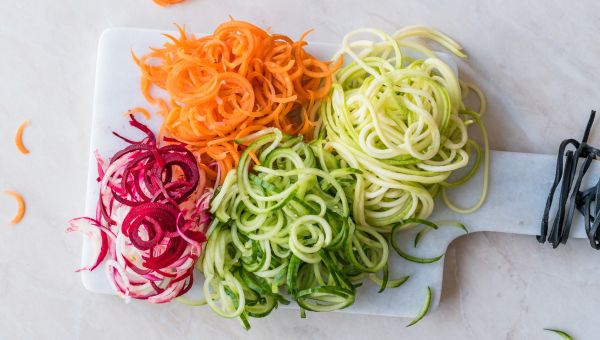
Dinner: veggie noodles
Including fresh spinach within your favorite pasta dish can add flavor, color, and a dose of vitamin A. You can slash carbohydrates and calories by ditching the pasta altogether. Veggie noodles, often made from zucchini, butternut squash, or cucumber, are a great alternative to traditional or whole-grain pasta. Zucchini noodles contain potassium, which helps promote normal muscle function, as well as manganese, a mineral that's important for bone health.
Add a double dose of nutrients to your pasta by sneaking some greens into your sauce. Boiled collard greens add texture, fiber, and vitamin A to homemade pasta sauce. You can also throw in some basil and sage, which can add flavor and nutritional value without extra calories.

Dinner: turkey burger
Before you toss your next turkey burger on the grill, mix shredded zucchini and scallions into the ground poultry. The combination of these greens adds folate—a B-vitamin helpful for producing healthy cells—plus vitamin K, which is essential for healthy blood. The moisture in zucchini also helps keep your burgers juicy.
Don’t forget the toppings. Layer on a few lettuce leaves, sliced pickles, and avocado for added vitamins and crunch, plus good-for-you fats.
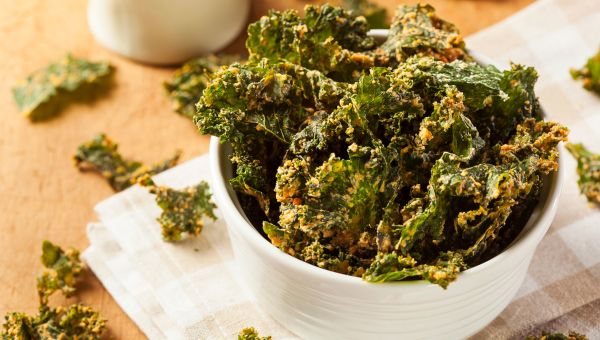
Snack: kale chips
Typical snack foods are often bags of empty calories. Most offer no vitamins or minerals. An ounce of potato chips (about 15 chips), contains 160 calories and 10 grams of fat. Instead, try a wholesome option, like homemade kale chips. Per cup, kale contains 34 calories, less than 1 gram of fat, but it’s packed with vitamins A, C, and K.
Drizzle kale with olive oil and your favorite spices and bake it for about 15 minutes at 350 degrees Fahrenheit (or until the edges are brown, but not burnt).
More On


video
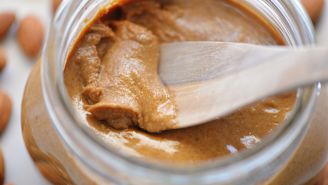
article
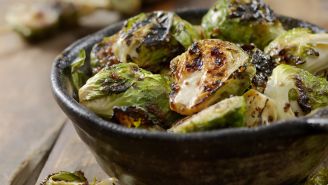
slideshow


video


video
